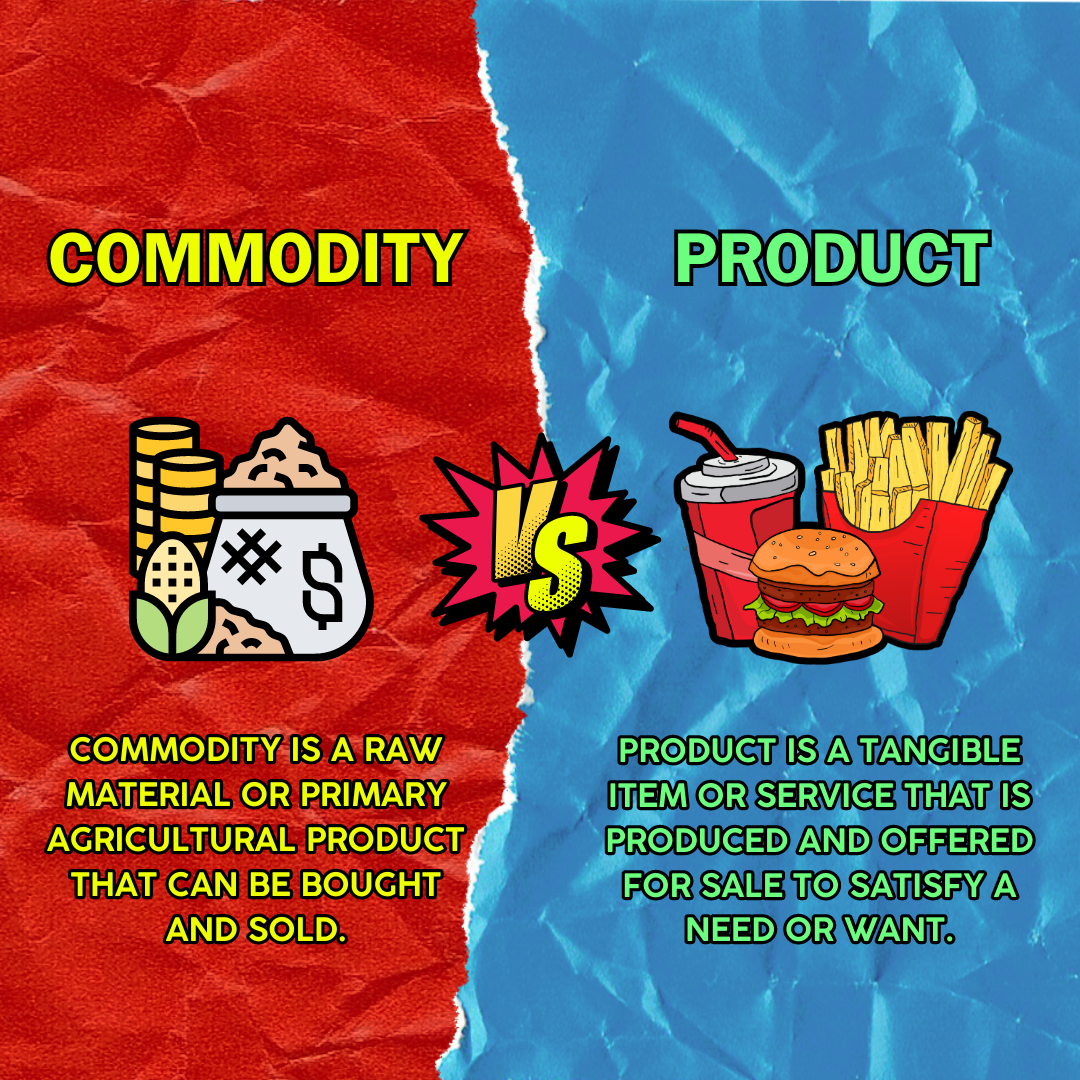Difference Between Commodity and Product
In the world of business and economics, two terms that are often used interchangeably but hold distinct meanings are “commodity” and “product.” While they both refer to goods that are traded in markets, understanding the nuances between them is crucial for businesses, investors, and consumers alike. In this blog post, we’ll delve into the definitions of commodities and products, explore their differences, and discuss the implications of these disparities.
Defining Commodity and Product:
Let’s begin by defining each term:
Commodity:
A commodity is a raw material or primary agricultural product that can be bought and sold. These goods are homogeneous, meaning they are virtually identical regardless of their source. Examples of commodities include crude oil, gold, wheat, and coffee beans. Commodities are typically traded on exchanges, and their prices are determined by supply and demand factors in the market.
Product:
A product, on the other hand, is a tangible item or service that is produced and offered for sale to satisfy a need or want. Unlike commodities, products can vary significantly in terms of quality, features, branding, and pricing. Products can be classified into various categories such as consumer goods, industrial goods, and services. Examples of products include smartphones, automobiles, clothing, and software applications.
Key Differences:
Now that we have defined both terms, let’s examine the key differences between commodities and products:

Homogeneity vs. Differentiation:
One of the primary distinctions between commodities and products lies in their homogeneity or differentiation. Commodities are homogeneous, meaning a unit of one commodity is essentially interchangeable with another unit of the same commodity. In contrast, products are differentiated, as they can vary in quality, design, features, and branding.
Price Determination:
The pricing mechanism for commodities differs from that of products. Commodity prices are primarily driven by global supply and demand dynamics, along with factors such as geopolitical events, weather conditions, and currency fluctuations. In contrast, product prices are influenced by production costs, branding strategies, competition, and consumer preferences.
Market Dynamics:
Commodities are often traded on specialized exchanges such as the Chicago Mercantile Exchange (CME) or the London Metal Exchange (LME). These markets facilitate standardized contracts for the trading of commodities. Products, on the other hand, are typically sold through retail channels or directly to consumers, with pricing and distribution strategies tailored to specific target markets.
Value Addition:
Products undergo value addition through various stages of production, including design, manufacturing, marketing, and distribution. This value addition allows businesses to differentiate their offerings and command premium prices based on perceived quality and brand image. Commodities, however, undergo minimal processing and do not typically involve significant value addition beyond extraction or cultivation.
Implications:
Understanding the distinctions between commodities and products has several implications for businesses, investors, and consumers:
Risk Management:
Businesses involved in the production or trading of commodities face exposure to volatile price fluctuations driven by global market forces. Effective risk management strategies, such as hedging using futures contracts, are essential for mitigating price risk in commodity markets.
Marketing and Branding:
For product-based businesses, effective marketing and branding strategies play a crucial role in differentiating offerings and creating value perception among consumers. Branding helps establish an emotional connection with customers and allows companies to command premium prices in competitive markets.
Investment Opportunities:
Investors seeking exposure to commodities often turn to futures contracts, exchange-traded funds (ETFs), or commodity-focused mutual funds. These investment vehicles allow investors to gain diversified exposure to commodity markets and hedge against inflation or economic downturns. In contrast, investments in product-based businesses offer opportunities for capital appreciation based on factors such as revenue growth, profitability, and market share expansion.
In conclusion, while commodities and products both represent goods traded in markets, they exhibit distinct characteristics in terms of homogeneity, pricing, market dynamics, and value addition. Understanding these differences is essential for businesses to develop effective strategies for production, marketing, pricing, and risk management. Likewise, investors and consumers can make informed decisions by recognizing the unique attributes and implications associated with commodities and products in the global economy.


